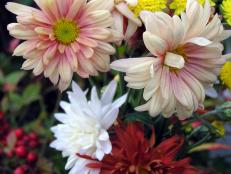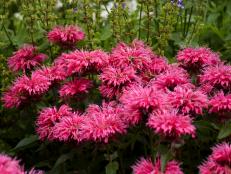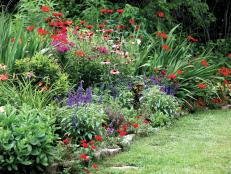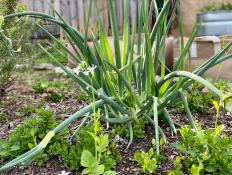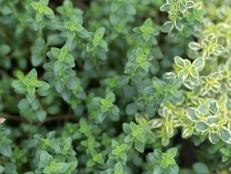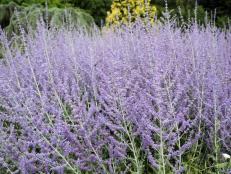Perennial Garden Ideas
Get easy-to-follow tips for designing a beautiful perennial garden.
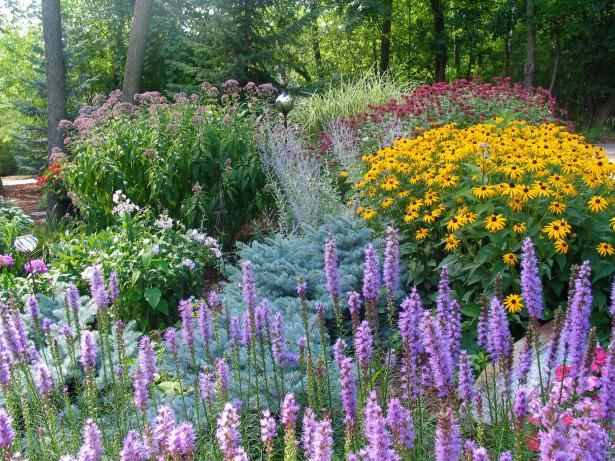
You don’t have to be a professional gardener or an artist to create eye-catching perennial garden designs. Start with a few basics of garden design, and you’ll be on your way to crafting your own perennial garden plans.
Start your perennial garden by deciding where it will be. Sunny gardens offer a larger plant palette to pull from than shady ones. Perennial garden ideas for full sun spots include a cutting garden, cottage garden and wildlife or butterfly garden. Native plant perennial gardens are a cinch to create for either sun or shade conditions.
Once you have a garden location and theme in mind, settle on a garden shape. You may have a logical space in mind, such as along a fence or walk, in front of a hedge or around a patio. Or you may want to design a free-standing bed in the middle of a large lawn area. If that’s the case, lean toward a kidney-shape bed—the curving shape naturally creates visual interest.
Incorporate curving edges into all of your perennial beds if space permits. Curves give a perennial garden a sense of movement and interest. Before breaking ground on new beds, lay out curves using a supple garden hose or rope. Make sure you can maneuver your lawn mower easily along the curving edges.
With all perennial garden shapes, arrange plants in tall to short fashion, tucking shortest plants along bed edges. If your bed has a definite back, such as a fence or row of evergreens, place the tallest plants toward the back of the bed. If the bed will be viewed from all sides, place tallest plants in the middle of the bed, and stair-step heights on both sides of the perennial garden.
For perennial garden designs paired with outdoor seating or poolside areas, select plants with views in mind. Don’t block desirable or necessary views, especially if you need to supervise children in a pool. If you’re creating perennial gardens around a bench or swing, you might want to use taller plants to enclose the space and foster a sense of privacy.
When designing perennial gardens, designate a focal point, a spot that will command attention and draw the eye to your perennial garden. The focal point can be a garden sculpture, a fountain, birdbath, bench or even a plant. A vine-covered tuteur easily qualifies as a focal point. With a kidney-shape bed, place the focal point at the incurve. That’s the spot the eye naturally rests when moving along such a bed.
After you have decided on a focal point, draw imaginary lines through it to other points in your perennial garden design. Choose one or more of these spots for secondary focal points, areas that help direct the eye to the main focal point. In a kidney-shape bed, for instance, you might place a secondary focal point in a lobe of the bed. By incorporating secondary focal points into your design, you give the eye a track to move along as it views the garden. This creates a sense of movement and rhythm, which is the beginning of a breathtaking perennial garden design.








